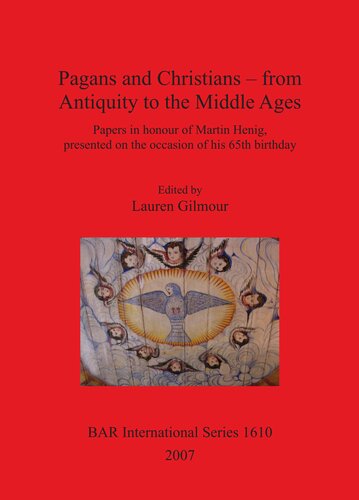

Most ebook files are in PDF format, so you can easily read them using various software such as Foxit Reader or directly on the Google Chrome browser.
Some ebook files are released by publishers in other formats such as .awz, .mobi, .epub, .fb2, etc. You may need to install specific software to read these formats on mobile/PC, such as Calibre.
Please read the tutorial at this link: https://ebookbell.com/faq
We offer FREE conversion to the popular formats you request; however, this may take some time. Therefore, right after payment, please email us, and we will try to provide the service as quickly as possible.
For some exceptional file formats or broken links (if any), please refrain from opening any disputes. Instead, email us first, and we will try to assist within a maximum of 6 hours.
EbookBell Team

0.0
0 reviewsPapers in honour of Martin Henig, presented on the occasion of his 65th birthday
For weeks after his Christian baptism and confirmation into the Church of England Martin presented a vivid sight as he walked briskly along the Oxford streets. Dressed in white trousers and white open neck shirt (no jersey or jacket in even the coldest weather) and long white hair, it was a striking statement of a new life that would easily have been recognised by those early Christians who were clothed in white robes after their baptism in font or river...Martin is especially well placed, by virtue of his long-standing academic interests and his personal convictions, to build a picture of Christianity in Roman Britain. He has, after all, written about many of the crucial pieces of evidence. He can give us a clear and comprehensive survey of art in the age of Constantine. He can also identify and trace the difference that Christianity made to that art. Religion in the Roman world was highly diverse, but there were elements within it which lent themselves to a later, Christian interpretation, such as the myth of Bellerophon and the Chimera. There was also an implicit longing as expressed in Sol Invictus, which found its fulfillment in Christ the unconquered victor over sin and death, the sun which will never set. The classical heritage of myth and story was part of the education of a Roman gentlemen, the paidea, even when the empire became Christian, but a Christian could see in at least some of it a pointer and foreshadowing of Christ. Martin is able to see it in this way too. There are some in the modern world who like to stress the great gulf, the sharp difference between Christianity and other faiths. Martin shows that for the church in the fourth century the continuities and fulfillments were just as important. The 44-page bibliography of his writings is substantial evidence to the range and depth of Martin's work: a scholar's scholar indeed. So I feel specially honoured to have been invited to write this short preface to these essays honouring him.' (Richard Harries, former Bishop of Oxford).